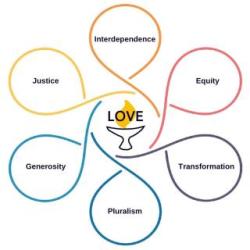Part Two
This is part two in a three-part essay on the question of abortion.
Legal Issues
Killing is the taking of a life; murder is the illegal taking of a life. Depending on the culture, or the region, killing may be legal in the following circumstances: war, self-defense, capital punishment and abortion.
The Parties
I should like to propose the ‘moral equation’ which might go as following: ax1+bx2+cx3+dx4 = rights. Where, x1 represents the rights of the mother, x2 represents the rights of the unborn. x3 represents the rights of the father and x4 represents the rights of society.
The rights of the unborn are complicated. While the mother, father and society can represent their own viewpoints; the unborn cannot represent its viewpoint. So, in fact, society has two kinds of rights here: the rights of the unborn, and society’s own rights, since birth is how society propagates itself. If a five-year-old child were being molested or seriously neglected within its family, society reserves the right to intervene and override the parents.
Societal concerns on this issue span the spectrum from nations in which abortion is enforced, e.g., China, all the way to communities in which the pregnant woman has no legal say at all about her reproductive rights and may not avail herself of contraception or termination of pregnancy.
What of the father’s rights? If a woman decides to carry a child to birth, then the father is expected, indeed legally mandated, to support it for the next 18 years. What if he didn’t want to be a father in the first place? Does he have the right to say “No”? And if he feels very strongly that his child go full term and be birthed, does he have no rights here? Are we in danger of just swinging from one pole to the other; a situation in which women had few procreation rights to a situation in which men have none?
And what of the special case when a teenager gets pregnant? Do her parents have no input into her decision? They are legally responsible for her other choices, but she can have an abortion without ever talking to them about it?
The Moral Dimension
I believe that morality is to ethics as engineering is to pure mathematics. In other words, morality is applied ethics, just as engineering is applied mathematics. I could also say that ethics is the science of living, while morality is the art of living. They are complementary pieces.
There is also a vitally important distinction to be made between moral values and moral laws. While there are absolute moral values, e.g., respect for life, truth, another’s reputation, property, sexuality, etc., I do not believe that there are any absolute moral laws. Of course, the values must be enshrined in precepts, but these precepts are not God-given, unalterable laws to be blindly obeyed whatever the circumstance. For example, while respect for truth is important, there are occasions when the moral thing to do is tell a lie. If I could save innocent lives, in a time of ethnic cleansing by telling the marauding mob that “No, I am not hiding members of the ‘accursed’ group in my house,” then, I believe, I am morally mandated to tell a lie.
In practice, the very governments and religions that legislate on these absolute values are the ones who most frequently contravene them and justify these contraventions as being both expedient and even good.
Then there is the consideration of the different approaches (Yin and Yang) in making moral decisions. It is, perhaps, a trifle simplistic and stereotypical, but there is value to the following distinction: Yang morality is the application of will power to revealed or legislated ethical principles. “Here are the pertinent ethical laws, use your will power and that will ensure a moral decision.” Yin morality is the exercise of choice in the widest possible human context. “There is a moral decision to be made and who will be affected by it? Where will the ripples end?”
Personally, I favor using a combination of these. It’s not that one system is good and the other bad, or that one is antiquated, and the other is modern. Rather, when making a moral decision, I need to consider the widest possible human context, then consider the pertinent ethical principles, and finally, exercise the necessary will power.
Some years ago, the archbishop of Chicago, Joseph Cardinal Bernadin, coined the phrase ‘the Seamless Garment approach.’ It means that any discussion of the sanctity of life needs to be evenly applied to the death penalty, killing in self-defense, warfare, and abortion. We cannot hold one to different standards than another.
In the Pro-life versus Pro-choice debate there is a tug-of-war between extending rights and curtailing rights, and how to represent both viewpoints. Let me employ two analogies to capture what might be the thinking of the Conservative Right and the Liberal Left.
In 18th Century Europe, the gentry had the right to duel. If one gentleman felt publicly insulted by another, he had the right to a challenge to defend his honor with pistols or swords. Frequently, these gentlemanly sorties ended with the death of one party. But it was not regarded as murder. However, if two working class men got into a barroom brawl where one of them then killed the other, that was regarded as murder. Imagine, then, a movement by working class men that the right to duel-to-the-death be extended to them. And, further, imagine society resolving the issue by deciding: Since taking life is intrinsically wrong, instead of extending this right to the working class, we need to abolish it for the gentry. I can imagine that kind of response from the Conservative Right: If abortion is morally wrong, rather than extend the availability to working class women, we need to ensure that upper class women cannot get access to it.
And the Liberal view might look like this, using an analogy from the drug culture. Since drug addicts are going to use needles anyway to shoot up and often use contaminated needles and dump their used needles where innocent others may be infected by them, let’s give them clean needles so they don’t compound their drug problem with toxic-needle-induced other illnesses, and risk the health of innocent bystanders into the bargain. So, in the abortion debate, it might look like this: Since women, from time immemorial, have availed of abortion, and since financially privileged women have always found a way around prohibitions against abortion, and since poorer women have always resorted to medically unsafe methods, why not, at least, ensure that all women have equal access to top quality medical care for this procedure?
And what of the responsibilities that go along with the rights? The mother, obviously, has the greatest responsibility. She will dedicate her own body to carrying, birthing, and nursing her infant. There is responsibility for the father, who will be legally, emotionally, and financially responsible for supporting the child to age 18. The parents of a pregnant teenager are responsible. Very often, they are the ones who wind up looking after their grandchild, if it is born, or dealing with their daughter should she choose an abortion. And society has its responsibilities.
I think it is very probable that after the first trimester, we are dealing with an en-souled human person. At that stage, abortion means killing an unborn baby, which is not to say that, in special circumstances, this may not only be acceptable, but may even be the morally responsible decision. But don’t let’s hide behind the ‘clump of cells’ line anymore.
In the case of late term abortions, I have two strong concerns for the fetus because I believe it is, at that stage, an en-souled human being and late term abortion is a euphemism for a very barbaric medical procedure.
I believe that teenagers need more parental input before choosing an abortion because they need, at the very least, to be exposed to considering, in depth, the full range of the consequences and issues involved with it. As a psychologist, I well understand that there are teenagers within highly dysfunctional or even abusive families who are fearful of revealing their condition to parents. In such a case, some other responsible adult needs to be consulted before the teenager makes such a momentous decision.
However, if a mother’s physical life were in danger by carrying a pregnancy to term, or if her psychological state would be seriously affected by the pregnancy, or if familial or financial circumstances were such that it would be a crushing weight on the family to have another member, then, I believe the mother would be morally justified in terminating the pregnancy, as early in the first trimester as possible.
In cases of rape or incest, I believe it is the pregnant woman’s moral right not to have the trauma and indignity of the crime compounded by the added insult of carrying, birthing, and raising a child of the perpetrator. Again, I would hope this could happen as early as possible after conception.
To complicate matters even more, the following are important considerations. Aborting a baby for purely cosmetic reasons: the fetus doesn’t have the color eyes I want in my child. Or racially motivated abortions: ‘let’s reduce the population of X’s in our nation.’ Or, more frequently the decision to abort a deformed/compromised fetus, “we only want kids with physically ‘perfect’ bodies.” History has shown us that many physically ‘perfect’ bodies have grown up to be criminals, tyrants, mass murderers, while ‘imperfect’ Down’s Syndrome children turn out to be pure incarnated love.
Note: I will complete this essay in part 3

















